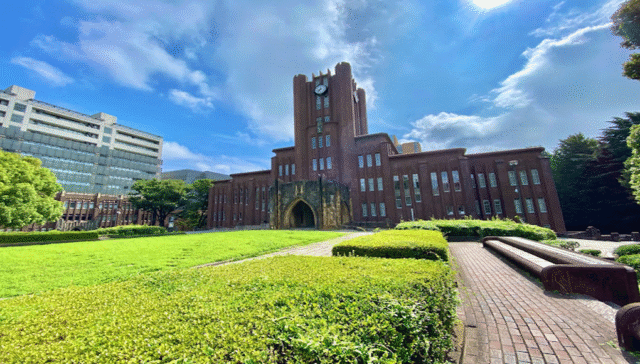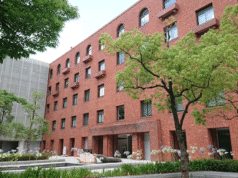The University of Tokyo: Japan’s First National University Blending Tradition, Innovation, and Global Leadership
Introduction
Founded in 1877 as Japan’s first national institution of higher education, The University of Tokyo has grown into one of the world’s premier research universities. With foundational values rooted in modernization and academic breadth, UTokyo offers globally respected education across humanities, sciences, engineering, social sciences, and medicine. Its historic campuses, world-class research centers, and commitment to international excellence make it a beacon of academic advancement and public engagement.
1. Establishment & Historical Evolution
- Founded in 1877, UTokyo emerged from merging Tokyo Kaisei School, Tokyo Medical School, and a preparatory school. Initially comprising four faculties: Law, Science, Letters, and Medicine, it symbolized Japan’s modernization efforts (The University of Tokyo, Wikipedia).
- The Imperial College of Engineering and Tokyo School of Agriculture and Forestry were later integrated, expanding UTokyo’s academic scope (The University of Tokyo).
- The iconic Akamon gate, located in Hongo campus, marks the university’s relocation in 1888 and remains a symbolic landmark (Wikipedia).
2. Affiliations & Institutional Standing
- UTokyo is celebrated as Japan’s premier national university, consistently ranked at the top among domestic and international institutions.
- Its ambition to lead sustainable research is expressed through initiatives like the University of Tokyo Sustainable Campus Project (TSCP), advancing carbon-neutral campus models and forest-based research (The University of Tokyo).
3. Academic Spectrum & Courses Offered
- UTokyo hosts a broad array of faculties and graduate schools across the arts, sciences, social sciences, engineering, medicine, and beyond (The University of Tokyo).
- Within the Faculty of Science, the Graduate School of Science, and their predecessor institutions, UTokyo has produced multiple Nobel Laureates and a Fields Medalist across disciplines like physics, chemistry, and biology (Wikipedia).
4. Campus Layout & Facilities
- UTokyo operates multiple campuses: Hongo, Komaba, and Kashiwa, providing vibrant academic environments (The University of Tokyo).
- The university museum, known as UMUT, manages UTokyo’s vast collections (~4 million items including botanical specimens) and operates several satellite galleries—including the Intermediatheque near Tokyo Station—open to the public (Wikipedia).
- Historically, the General Library was rebuilt after a devastating fire following the Great Kanto Earthquake (1923), aided by support from the Rockefeller Foundation; UTokyo’s library system was later innovatively computerized in 1986 (lib.u-tokyo.ac.jp).
5. Research Excellence & Innovation
- UTokyo emphasizes interdisciplinary, collaborative research via platforms like UTIAS (University of Tokyo Institutes for Advanced Study), global Japan studies, and cross-department collaborations (The University of Tokyo).
- Its research institutes span from cutting-edge biomedicine and artificial intelligence to Earthquake Science and sustainability. Some institutes include:
- UTIAS and Kavli Institute for the Physics and Mathematics of the Universe
- International Research Center for Neurointelligence (IRCN)
- UTOPIA (Pandemic Preparedness center)
- Collaborative centers covering AI, life sciences, disasters, climate, and more (The University of Tokyo).
6. Career Support & Global Programs
- The PEAK Undergraduate Admissions Office (based at Komaba) facilitates international engagement through English-language admissions, favoring diversity by selecting outstanding global students through applications and interviews rather than exams (c.u-tokyo.ac.jp).
- Although explicit details on placement services aren’t provided in the sources, UTokyo’s rich academic reputation and global network inherently support student career opportunities.
7. Scholarships & Fellowship Programs
- While direct scholarship details are not cited, UTokyo’s status as a leading national university and its global recruitment through programs like PEAK suggest the availability of financial supports, especially for international and graduate students.
8. Notable Alumni & Academic Honors
- The Faculty of Science alone has nurtured:
- 6 Nobel Laureates (including Esaki, Koshiba, Kajita, Osumi, Manabe)
- 1 Fields Medal (Kodaira) (Wikipedia).
- These distinguished alumni reflect UTokyo’s outstanding contribution to world-class research and innovation.
9. Reputation, Rankings & Awards
- UTokyo is widely recognized as Japan’s top university across academic, research, and global rankings, especially strong in natural sciences and technology.
- Its TSCP environmental initiative solidifies its role in sustainable leadership (The University of Tokyo).
10. Address & Contact Details
- UTokyo’s campuses are centrally mapped, including Hongo, Komaba, and Kashiwa, accessible via the official “About UTokyo” pages (The University of Tokyo).
- For contact, one can refer to UTokyo’s “Access and Campus Maps” section, which provides detailed campus locations and administrative contacts.
Summary
The University of Tokyo blends historical heritage with global foresight—from its establishment in 1877 as Japan’s first national university to serving as a modern research powerhouse. With wide-ranging faculties, stellar alumni achievements, world-class research initiatives, public museums, sustainable campus frameworks, and international outreach like the PEAK program, UTokyo continues to drive Japan and the world forward academically and socially.
University of Tokyo admission requirements, courses at University of Tokyo Japan, University of Tokyo scholarships for international students, University of Tokyo global ranking, how to apply to University of Tokyo, University of Tokyo research programs, student life at University of Tokyo Japan, University of Tokyo academic excellence














